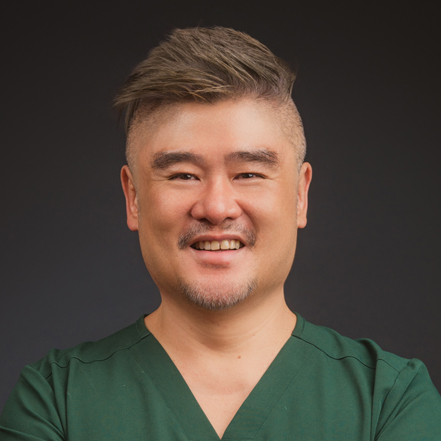Myopia
our services
Myopia, also known as nearsightedness, refers to difficulty seeing distant objects clearly while
having a clear vision of nearby objects. This common vision condition typically begins in
childhood or adolescence.
Myopia is a significant public health concern in Singapore, earning the country the title of the
“Myopia Capital of the World” due to having one of the highest myopia rates in the world.
Approximately 65 per cent of children and 83 per cent of young adults in Singapore are affected
by this condition.

What Causes Myopia?
Myopia is caused by a refractive error in the eye. In a healthy eye, light rays converge perfectly onto the retina, creating sharp vision. However, in myopia, the eyeball is elongated or the cornea is excessively curved. This disrupts light focusing, causing light rays to converge in front of the retina instead. This results in blurry vision for distant objects, while near objects appear clear.
What Are the Signs and Symptoms of Myopia?
Common symptoms of myopia include:
- Blurred vision when looking at distant objects
- Squinting or straining to see clearly
- Eye fatigue or discomfort after prolonged periods of focusing on distant objects
- Headaches
- Difficulty seeing clearly during activities
- Needing to sit closer to objects
What Are the Degrees of Myopia?
Low Myopia
– People with low myopia have a refractive error between -0.5 and -3.00 diopters. They may slightly not see distant objects clearly but can usually see well up close without a problem.Moderate Myopia
– This degree falls within the range of -3.25 to -6.00 diopters. People with moderate myopia typically experience more noticeable difficulty seeing distant objects and may require corrective lenses for activities that involve distance vision.High Myopia
– With a refractive error between -6.00 and -8 diopters, people with high myopia cannot see clearly without corrective lenses or procedures such as LASIK. They often require stronger prescriptions for eyeglasses or contact lenses to see clearly.Extreme Myopia
– It is often used to describe myopia with a refractive error of -10.00 diopters or higher. People with extreme myopia have a greater risk of developing retinal abnormalities.
Several risk factors contribute to the development and progression of myopia, including:
- Family History – Having parents with myopia increases the risk of developing the condition.
- Age – The risk of myopia tends to increase as children grow older, especially during the teenage years.
- Lack of Outdoor Time – Having insufficient time outdoors, particularly during daylight hours, increases the risk of developing myopia due to less natural outdoor light exposure.
- Too Much Near Work – Prolonged time spent reading or using smartphones or computers influences the risk of myopia development.
Seeing an ophthalmologist for a myopia assessment in Singapore is especially important when experiencing
any signs of vision problems such as frequent squinting, eye strain, or difficulty focusing on objects
at a distance.
People with myopia, particularly those with high degrees, should be vigilant about their eye health and
seek immediate medical attention if they experience a large number of floaters in vision, light flashes,
a grey curtain-like shadow, or a shadow in peripheral vision. These symptoms could indicate retinal
detachment, requiring prompt treatment to prevent permanent vision loss.
Myopia, while a common vision condition, can sometimes lead to more serious complications if left uncorrected, or if it is severe:
- Retinal Detachment – Myopia increases the risk of retinal detachment due to the enlargement of the eyeballs, which can thin the retina and make it more prone to tearing or detaching from the back of the eye.
- Cataracts – High myopia is associated with structural changes in the eye, such as thinning of the lens and an increased risk of clouding, which can contribute to the development of cataracts. Higher rates of cataract surgery are seen in people with high myopia.
- Glaucoma – People with myopia have a higher risk of developing glaucoma due to the enlargement of the eyeball and alterations in the optic nerve. These changes can increase intraocular pressure, leading to damage to the optic nerve and an increased risk of glaucoma.
- Macular Degeneration – The risk of macular degeneration in myopia increases with age and higher levels of myopia. The enlargement of the eyeball in high myopia can lead to stretching and thinning of the macula, the central part of the retina responsible for sharp central vision.
Our Myopia Eye Specialists

Dr Don Pek
Senior Consultant Ophthalmologist
With over 15 years of specialist experience in ophthalmology in Singapore, the United Kingdom and Canada, Dr Don Pek is particularly skilled in the treatment of myopia, cataract surgery and anterior segment reconstruction. Outside of his clinical practice, Dr Pek devotes his time to medical missions and humanitarian work; and notably received the Healthcare Humanities Award from the National Healthcare Group (NHG) in 2011.

Dr Clarissa Cheng
Senior Consultant Ophthalmologist
With more than 15 years of specialist experience in ophthalmology, including a rigorous fellowship training in the United Kingdom, Dr Clarissa Cheng is dedicated to providing the best possible care in the treatment of myopia, cataracts and complex retinal surgeries, among others. Dr Cheng formerly served as Deputy Head of the Eye-PACE Clinic and Lead Clinician for the Nurse-Led Intravitreal Injection Service at Tan Tock Seng Hospital.
